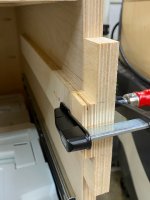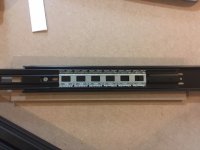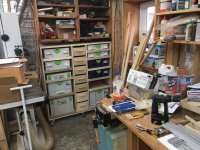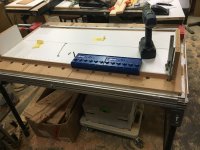Hi all,
I'm wondering if anyone has used the kreg shelf pin jig for drilling holes for drawer slides? I understand this would be time consuming and the LR 32 would be better.
I was thinking of marking a centre line on the jig and aligning it with a spacer block clamped in place and drill the holes. I haven't seen anyone do this before so I was wondering if there is there anything I am missing?
I'm making 8 sysports cabinets and would like the flexibility of being able to move the drawers as needed.
Cheers,
Andrew.
I'm wondering if anyone has used the kreg shelf pin jig for drilling holes for drawer slides? I understand this would be time consuming and the LR 32 would be better.
I was thinking of marking a centre line on the jig and aligning it with a spacer block clamped in place and drill the holes. I haven't seen anyone do this before so I was wondering if there is there anything I am missing?
I'm making 8 sysports cabinets and would like the flexibility of being able to move the drawers as needed.
Cheers,
Andrew.








